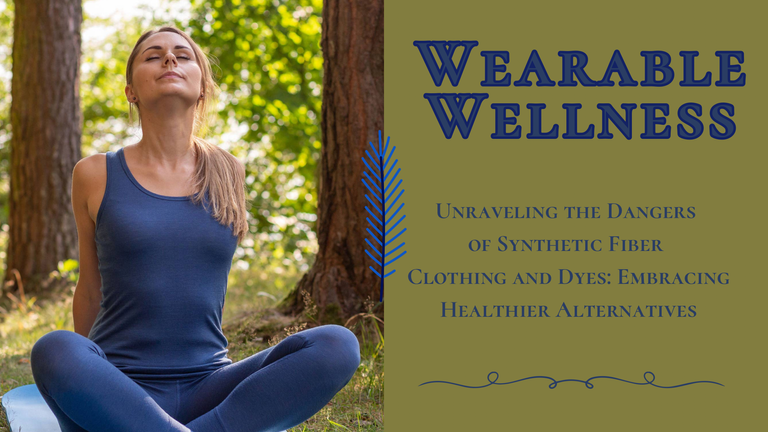
In the fast-paced world of fashion, synthetic fiber clothing has become a ubiquitous choice for its affordability, versatility, and easy care. However, beneath the sheen of convenience lies a web of potential dangers to both our health and the environment. From polyester to nylon, these synthetic fabrics, along with the dyes used to color them, raise significant concerns that may prompt a shift towards healthier alternatives like merino wool and linen.
One of the primary issues with synthetic fibers is their environmental impact. Most synthetic fabrics are derived from petroleum-based chemicals, contributing to the depletion of non-renewable resources and releasing harmful greenhouse gases during production. Furthermore, the microplastic pollution generated by washing synthetic garments is a growing threat to aquatic ecosystems, as these microscopic particles find their way into rivers and oceans, harming marine life.
Beyond the environmental concerns, synthetic fabrics pose potential health risks. Many of these materials are treated with chemicals such as formaldehyde, which can cause skin irritation, allergies, and respiratory issues. The close contact between synthetic clothing and our skin increases the risk of these chemicals being absorbed into our bodies over time. Additionally, the lack of breathability in synthetic fabrics can lead to moisture retention, creating an ideal environment for bacteria and fungi to thrive, potentially causing skin infections.
https://wearablewellnessboutique.com
To combat these issues, a rising trend in sustainable fashion is turning towards natural fibers such as merino wool and linen. Merino wool, derived from the fleece of merino sheep, offers numerous benefits. It is naturally breathable, moisture-wicking, and has anti-bacterial properties, making it an ideal choice for those with sensitive skin or allergies. Furthermore, merino wool is biodegradable, ensuring a minimal environmental footprint.
Linen, made from the fibers of the flax plant, is another eco-friendly and health-conscious alternative. Known for its breathability and moisture-wicking abilities, linen keeps the body cool in warm weather. It is also naturally hypoallergenic and resistant to bacteria, making it an excellent choice for individuals with skin sensitivities. Linen's biodegradability further solidifies its position as a sustainable fabric.
Choosing merino wool and linen over synthetic alternatives not only benefits individual well-being but also contributes to a more sustainable and ethical fashion industry. These natural fibers are produced through processes that are less harmful to the environment and involve fewer chemical treatments. By opting for quality over quantity, consumers can promote a shift towards a more responsible and health-conscious approach to fashion.
In conclusion, the dangers associated with synthetic fiber clothing and dyes extend beyond their aesthetic appeal. From environmental degradation to potential health risks, the true cost of fast fashion is steep. Embracing alternatives like merino wool and linen not only safeguards our health but also supports a more sustainable and ethical fashion landscape. As consumers, we hold the power to drive change by making informed choices that prioritize both our well-being and the well-being of the planet.
Congratulations @choosefreedom! You have completed the following achievement on the Hive blockchain And have been rewarded with New badge(s)
Your next target is to reach 400 posts.
You can view your badges on your board and compare yourself to others in the Ranking
If you no longer want to receive notifications, reply to this comment with the word
STOPTo support your work, I also upvoted your post!
Check out our last posts: